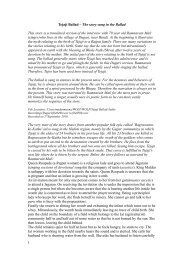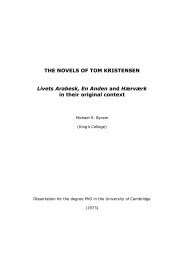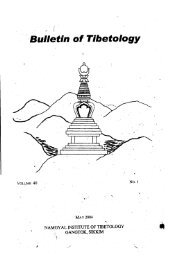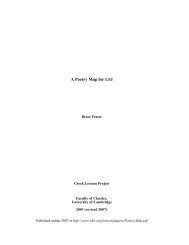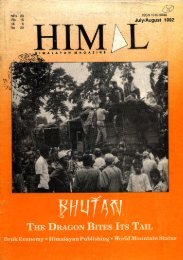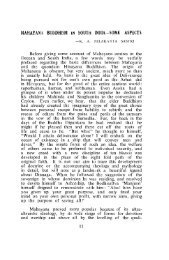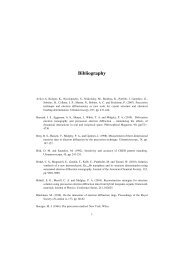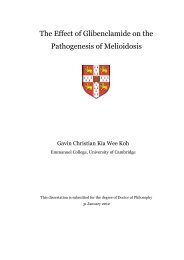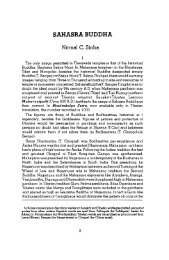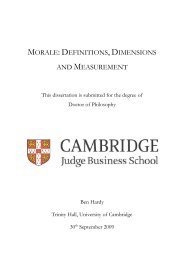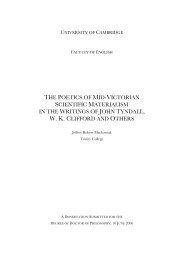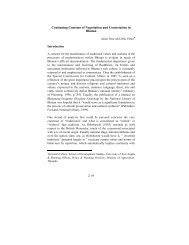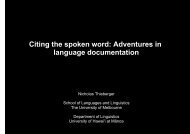The Crusades, the Genoese and the Latin East - DSpace at ...
The Crusades, the Genoese and the Latin East - DSpace at ...
The Crusades, the Genoese and the Latin East - DSpace at ...
Create successful ePaper yourself
Turn your PDF publications into a flip-book with our unique Google optimized e-Paper software.
contains some useful inform<strong>at</strong>ion about <strong>Genoese</strong> society in <strong>the</strong> <strong>L<strong>at</strong>in</strong> <strong>East</strong> <strong>and</strong> it will be discussed<br />
<strong>at</strong> gre<strong>at</strong>er length in <strong>the</strong> Chapter Five. In <strong>the</strong> following discussion, however, <strong>the</strong>re will be an<br />
<strong>at</strong>tempt to make use of some of <strong>the</strong> economic implic<strong>at</strong>ions of this report th<strong>at</strong> might enable a better<br />
underst<strong>and</strong>ing of <strong>the</strong> questions presented above.<br />
An interesting clue emerges from <strong>the</strong> value of <strong>the</strong> sum collected from Acre as a census<br />
when compared to o<strong>the</strong>r revenues. A comparison between this figure of £50 (or 150 bezants) <strong>and</strong><br />
<strong>the</strong> revenues of <strong>the</strong> <strong>Genoese</strong> commune from its possessions in Acre in <strong>the</strong> middle of <strong>the</strong> thirteenth<br />
century will show th<strong>at</strong> it was not a significant amount of money. It was clearly not a large sum in<br />
terms of commerce but also not a significant tax. In <strong>the</strong> year 1248, <strong>the</strong> consuls Simon Malocello<br />
<strong>and</strong> Guglielmo de Bulgaro collected 1,047 bezants <strong>and</strong> 12 car<strong>at</strong>s. In <strong>the</strong> following year, <strong>the</strong><br />
consuls Simon Malocello <strong>and</strong> Ogerio Ricii were supposed to receive 1,843 bezants <strong>and</strong> 18 car<strong>at</strong>s.<br />
<strong>The</strong> consuls of <strong>the</strong> commune <strong>the</strong>refore collected revenues of more or less ten times more than <strong>the</strong><br />
sum th<strong>at</strong> Ottone Giudice <strong>and</strong> Ugo Ferrario were sent to collect in 1200 <strong>and</strong> 1222! <strong>The</strong>se figures<br />
are derived from <strong>the</strong> first four sections in <strong>the</strong> report concerning <strong>the</strong> rent ad passagium which<br />
means short term rent during <strong>the</strong> sailing season, <strong>and</strong> rent ad annum. A recent analysis of this text<br />
was published by Robert Kool, who identified eight sections in <strong>the</strong> text, which are also being used<br />
in <strong>the</strong> current analysis 504 <strong>The</strong> amount collected from <strong>the</strong> rent was probably exagger<strong>at</strong>ed to some<br />
extent because<br />
<strong>the</strong> report was compiled especially to be used in <strong>the</strong> conflict between <strong>the</strong> <strong>Genoese</strong><br />
<strong>and</strong> <strong>the</strong> Venetian communes when <strong>the</strong>y presented mutual dem<strong>and</strong>s for compens<strong>at</strong>ion.<br />
505<br />
Importantly, three sections in <strong>the</strong> report concern <strong>the</strong> census. Kool did not explain wh<strong>at</strong><br />
was this census paid for, but it can be easily inferred from his description th<strong>at</strong> he interpreted it as<br />
l<strong>and</strong> tax as opposed to ownership of <strong>the</strong> houses <strong>the</strong>mselves. This seems a correct interpret<strong>at</strong>ion in<br />
essence <strong>and</strong> is clearly based on an old analysis of <strong>the</strong>se three sections of <strong>the</strong> report by Joshua<br />
Prawer. Prawer, however, classified <strong>the</strong>se three sections as one because <strong>the</strong>y are all about <strong>the</strong><br />
same tax. 506 Prawer suggested assessing <strong>the</strong> size of houses according to <strong>the</strong> amount of tax paid for<br />
<strong>the</strong>m. He wrote `as <strong>the</strong> tens certainly reflects in some measure <strong>the</strong> size of <strong>the</strong> house, it is worth<br />
tabul<strong>at</strong>ing <strong>the</strong> respective cens. iS07 This idea, however, requires careful analysis. Section number<br />
six in <strong>the</strong> report is concerned with <strong>the</strong> census from property th<strong>at</strong> was built in one of <strong>the</strong> following<br />
parts of <strong>the</strong> <strong>Genoese</strong> quarter, <strong>the</strong> burgensia or in rugam comunis Ianuae S08 <strong>The</strong> total amount<br />
collected for this census was 358 bezants <strong>and</strong> 12 car<strong>at</strong>s. Only a few houses th<strong>at</strong> belonged to <strong>the</strong><br />
504 Robert Kool, `<strong>The</strong> <strong>Genoese</strong> Quarter in Thirteenth-Century Acre'. Kool analysed <strong>the</strong> urban layout of <strong>the</strong><br />
quarter <strong>and</strong> not <strong>the</strong> economic side of <strong>the</strong> report. <strong>The</strong> report itself was not republished by him. See Cornelio<br />
Desimoni, `Qu<strong>at</strong>re Titres des proprietes Genois A Acre et ä Tyr' in AOL 2 (1884), Documents, pp. 213-222.<br />
505 See more about this report in Chapter Five.<br />
506 Kool, ibid, p. 190; Joshua Prawer, Crusader Institutions (Oxford, 1980), pp. 239-241.<br />
507 Prawer, ibid, p. 240.<br />
508 Desimoni, ibid, p. 219.<br />
139



